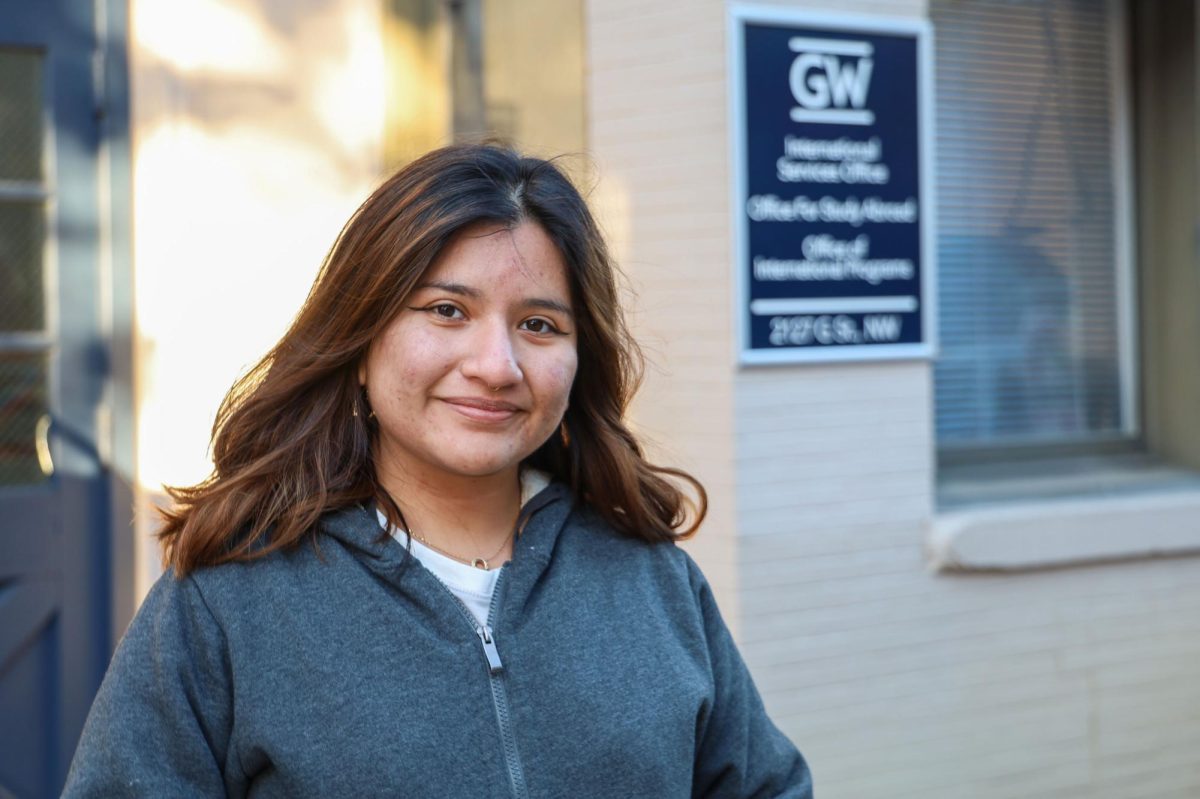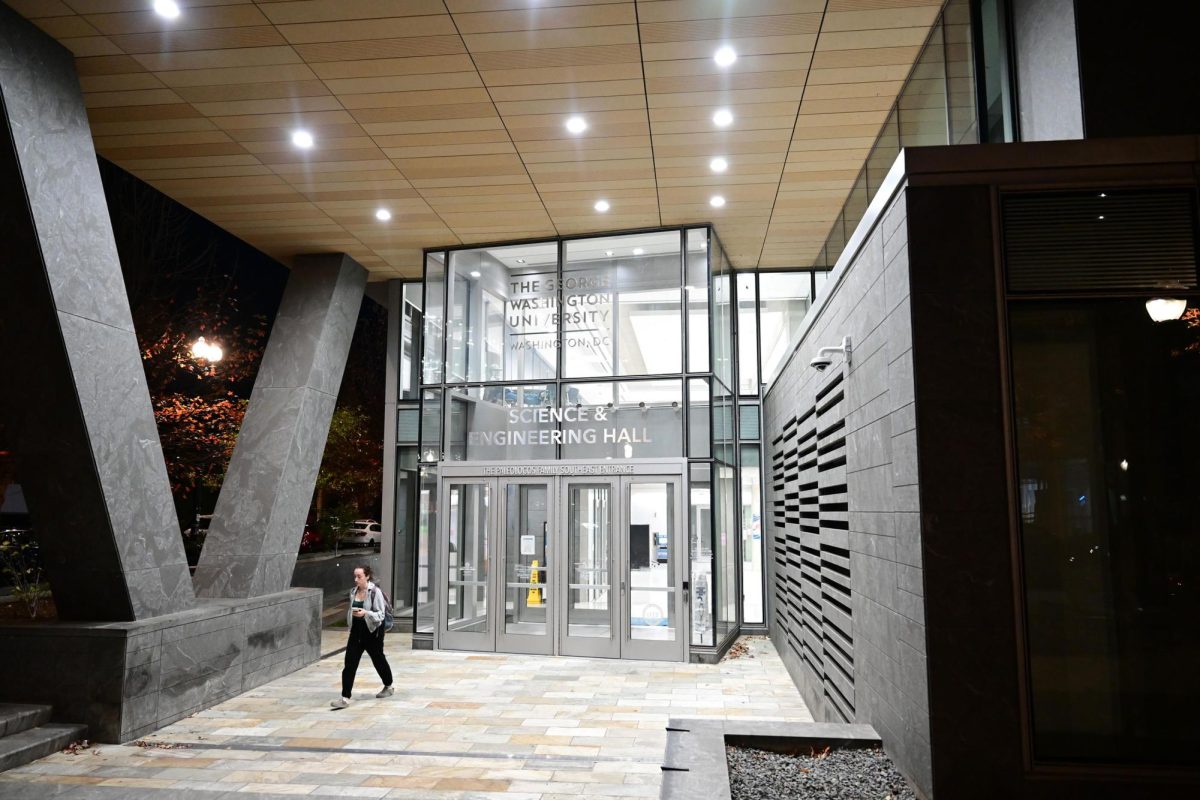Student voter participation jumped about 25 percentage points between midterm elections in 2014 and 2018, sticking GW above the national rate, according to a report compiled by a Tufts University-based organization.
About 11,000 students – or about 47 percent of the student body – cast a ballot in the 2018 midterm elections, about eight percentage points higher than the 39 percent average across all U.S. universities, according to the National Study of Learning, Voting and Engagement published last semester. Political science and higher education experts said schools that host pop-up voter drives and seminars about voting and elections – both of which GW has done in recent years – help to increase voter turnout.
“The midterms were an incredible election in terms of college students for a number of reasons, but the main takeaway is that turnout doubled from the previous midterm election,” said Adam Gismondi, the director of impact at the Institute for Democracy and Higher Education, which is based out of Tufts.
NSLVE works with the National Student Clearinghouse – a career and college preparation organization – to research and compare institutions’ voter participation rates in a database. NSLVE compiles voting information from major elections into a specialized report sent to each participating college, according to NSLVE.
The number of students registered to vote at GW increased by more than 4,500 students between the 2014 and 2018 midterm elections, and the number of students who voted after registering increased by more than 6,700 votes, the study states.
GW majors like communications and literature recorded the greatest increase in student votes between 2014 and 2018, according to the report. Students majoring in English literature and language increased about 37 percent, and cultural and gender group studies major voter participation increased about 35 percent between the two midterms, the report found.
The Class of 2021 also recorded the highest voting rate for undergraduate students that year, standing at 40 percent.
Gismondi, the director of impact at the Institute for Democracy and Higher Education who was involved with compiling the report, said faculty involvement across disciplines, holding in-depth student forums about current political issues and educating students about voting rights history or how to cast a vote have increased voter turnout.
The number of student voters in the 2016 presidential election increased more than 11 percent at Tufts with a voting rate of about 63 percent, according to the school’s report. The national average for student voters in 2016 clocked in at more than 50 percent, according to the report.
Gismondi said a student organization called JumboVote holds student forums and town halls during elections to educate students on political candidates and engage them in “peer-to-peer support.”
Alissa Karton, the director of special projects and assistant to the vice president at George Mason University, said the school launched an organization called Mason Votes in 2007 to educate students about voting and elections. The school’s voter participation rate increased by about 25 percent between the 2014 and 2018 midterm elections, and the school recorded a 2018 voter rate of about 52 percent, according to the report.
“We want students to understand that local and regional government and voting in elections is just as important, maybe more important than the presidential one,” Karton said. “It’s just about reiterating that and educating and creating awareness around the elections and voting.”
Like Mason Votes, a nonpartisan task force in the Nashman Center for Civic Engagement and Public Service called GW Votes released a plan to increase presidential voter participation rates from 58 percent in 2016 to 65 percent by 2020. The program communicates with more than 15 student organizations, like GW College Democrats and GW College Republicans, to develop events that encourage students to vote.
GW Votes launched a competition between residence halls in 2018 to encourage students to register to vote, resulting in more than 1,100 new voters.
George Mason’s urban location attracts several inquiries from political speakers, which helps rally students around political engagement, Karton said. Faculty are also encouraged to host “flash lectures” during election season to educate students about current campaigns, she said.
Presidential candidates like Sen. Bernie Sanders, I-Vt. and former presidential candidates Hillary Clinton and Sen. Kamala Harris D-Calif., have visited campus over the past couple of years.
More than 100 students registered to vote during the event and members of the organization provided more information to students interested in the election.
“We have student organizations who do voter registration, plan candidates to come on campus or do debates,” Karton said. “So Mason Votes tries to help facilitate connecting those groups with the right resources.”
John Olds, the GW College Republicans chairman, said GW boasts an active political community, but a significant number of students are not responsive to “in-your-face activism,” which counteracts efforts to increase student voter turnout. The group intends to table in Kogan Plaza Feb. 3 with GW Votes, and representatives from the Republican National Committee are invited to attend the group’s general body meetings to help register students to vote.
Prior to the midterm elections, College Republicans and College Democrats set off on canvassing trips to advocate for nearby candidates in a Virginia district.
“Apathy is a big issue, and we in the political community need to do a better job of relating to students who aren’t so into politics because their voice matters, too,” Olds said.
Tara Suter contributed reporting.








